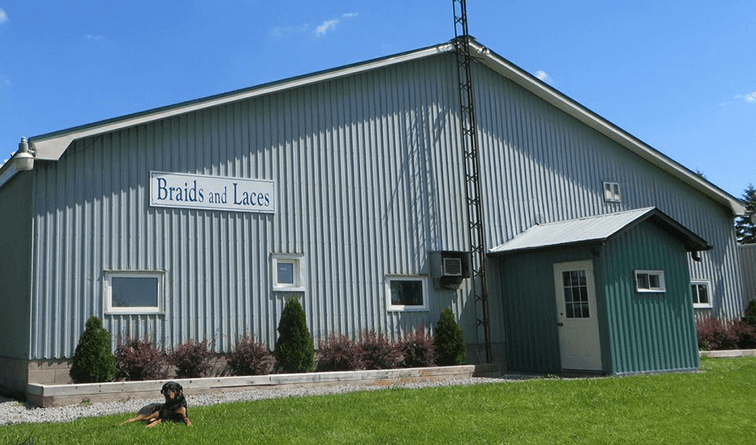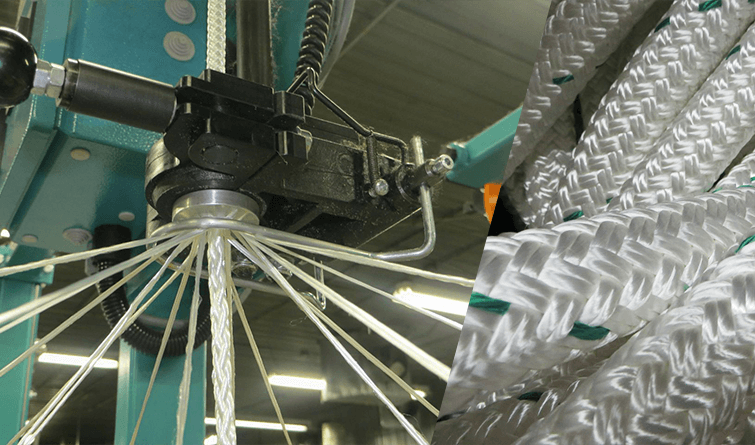
The Best Rope Types for Marine Use: Dock Lines, Tow Lines & Safety Lines
November 26, 2025
Selecting the right marine rope types is paramount for safety, performance, and longevity in any maritime application, from recreational boating to commercial shipping. Whether you’re securing a vessel with dock lines, undertaking heavy-duty towing, or ensuring crew safety with lifelines, the choice of rope material and construction makes a critical difference. This guide delves into the specific characteristics of various marine rope types, highlighting their ideal uses, the importance of Working Load Limit (WLL), and how safety factors contribute to reliable operation. We’ll cover essential considerations for procurement teams, including material properties, industry standards, and a practical checklist for evaluating suppliers to ensure your marine operations are equipped with the best and safest ropes available.
Understanding Marine Rope Essentials: WLL and Safety Factors
For marine applications, understanding the distinction between Minimum Breaking Strength (MBS) and Working Load Limit (WLL) is crucial. MBS represents the maximum load a rope can withstand in a destructive test, while WLL is the safe operational limit derived by applying a safety factor to the MBS. Specifying WLL, not MBS, for marine ropes ensures that the rope can safely handle anticipated loads, accounting for environmental factors like UV exposure, saltwater, dynamic forces, and wear. This prevents dangerous overloads and supports safer purchasing decisions for all marine rope types.
This table compares core attributes of MBS and WLL for quick marine procurement reference.
This comparison shows why procurement teams must move from raw MBS figures to certified WLL values when creating purchase specifications for marine rope types.
Practical implications for marine rope specification and inventory management include:
- Don’t accept MBS alone when confirming allowable loads for marine applications.
- Require supplier documentation that shows the safety factor used to derive WLL for all marine rope types.
- Use WLL labels and inspection records to govern in-service limits on board.
Why Is Working Load Limit Critical for Safe Marine Rope Use?
Working load limit is critical because it converts raw tensile capacity into a conservative operational limit that accounts for real-world marine conditions such as shock loads from waves, abrasion against cleats or fairleads, UV degradation, saltwater exposure, and fatigue. WLL protects users by embedding a safety factor that mitigates variability between test conditions and service environments; this makes WLL a practical control for daily marine operations. Ignoring WLL or basing procurement on MBS alone can lead to dangerous overloads and accelerated retirement of assets, increasing downtime and liability. Therefore, specifying marine rope WLL with clear inspection and retirement criteria preserves safety and reduces unexpected replacement costs.
Key Marine Rope Types and Their Applications
Choosing the correct marine rope types for specific tasks is essential for optimal performance and safety. Different materials and constructions offer unique advantages for various applications on the water.
Dock Lines – Secure Mooring
Dock lines are fundamental for securing vessels safely to docks, piers, or other boats. They need to be strong, durable, and resistant to abrasion and UV degradation. The best materials for dock lines offer a balance of strength and elasticity to absorb shock loads from waves and wind.
- Nylon: The most popular choice for dock lines due to its excellent elasticity (stretch), which helps absorb shock loads without putting undue stress on cleats or the boat’s structure. Nylon is also highly resistant to UV light, abrasion, and mildew. Available in 3-strand, double braid, and plaited constructions.
- Polyester: Offers less stretch than nylon but superior UV resistance and strength. It’s often used for dock lines where minimal stretch is desired, or in combination with nylon. Polyester is also very abrasion-resistant.
For dock lines, look for pre-spliced eyes for easy attachment and ensure the diameter is appropriate for your vessel’s size and weight.
Tow Lines – Power and Reliability
Tow lines demand exceptional strength, low stretch, and often buoyancy, especially for heavy-duty towing operations. These ropes are subjected to immense forces and must perform reliably under stress.
- UHMWPE (Ultra-High Molecular Weight Polyethylene) / Dyneema: Known for its incredibly high strength-to-weight ratio, making it significantly stronger than steel cable of the same diameter, yet it floats. It has very low stretch, excellent abrasion resistance, and is highly resistant to UV and chemicals. Ideal for heavy-duty tow lines where maximum strength and minimal stretch are critical.
- Polypropylene: A lightweight, buoyant rope that is often used for lighter tow lines or dinghy painter lines. It has good resistance to rot and mildew but is less abrasion-resistant and has lower UV resistance compared to nylon or polyester.
When selecting tow lines, consider the weight and size of the vessel being towed, and always prioritize ropes with high WLL values.
Safety Lines & Lifelines – Critical Protection
Safety lines and lifelines are non-negotiable for crew safety on board, preventing falls overboard and providing secure attachment points. These ropes must be highly visible, durable, and resistant to environmental factors.
- Polyester: Excellent for lifelines due to its low stretch, high strength, and superior UV resistance. It maintains its strength well when wet and is resistant to abrasion. Often found in bright colours for high visibility.
- Nylon: Can be used for safety lines, offering good strength and abrasion resistance. However, its stretch might be a disadvantage for lifelines where minimal movement is preferred.
Lifelines often require specific certifications and should be regularly inspected for wear and tear. High visibility colours are recommended for easy identification in emergency situations.
How Do Safety Factors Influence Working Load Limit in Marine Rigging?
Safety factors (also called design factors) are numeric divisors applied to MBS to define WLL and to provide a margin for variability, wear, and dynamic loading in marine environments. The formula is straightforward: WLL = MBS / Safety Factor, which means higher safety factors yield lower allowable operational loads. Marine procurement must select safety factor ranges appropriate to the application, balancing operational efficiency and safety; documented rationale for chosen factors should be part of supplier submissions. Clear communication about safety factor expectations prevents downstream misunderstandings in contracts and field use for all marine rope types.
Common industry practice maps marine application to safety factor; examples include:
- Mooring/Docking (controlled environment): typical safety factor 3:1–5:1 for certain synthetic dock lines.
- Heavy Towing/Salvage: higher factors (6:1–8:1) due to unpredictable dynamic loads.
- Lifelines/Safety Lines: highest factors (8:1–12:1) for life-critical applications.
This calculation example shows the numeric effect of safety factors on WLL for marine rope types.
This table helps procurement compare required margins across marine applications and calculate working load limit values when reviewing supplier test data for marine rope types.
How Do Safety Factors Protect Against Dynamic Loading and Material Fatigue in Marine Use?
Safety factors mitigate the unpredictable effects of dynamic loading—shock peaks from waves, cyclical fatigue from constant motion, and cumulative wear from friction—that reduce effective rope strength over time in marine environments. A safety factor provides a buffer so occasional overloads or repeated stress cycles do not immediately bring the rope near its breaking threshold. Inspection, maintenance, and retirement criteria tie directly to assumed safety factors; for example, marine rope types used under dynamic conditions typically require more frequent inspections and conservative retirement margins. Procurement should require inspection schedules aligned with the safety factor and application to ensure WLL is maintained in service.
Marine Rope Standards and Compliance for Procurement Teams
Several authoritative bodies provide guidance and standards that shape how MBS and WLL are tested, reported, and applied for marine rope types; procurement teams should reference these documents when writing specifications. Standards influence test methods, safety factor guidance, labeling, and inspection practices, and suppliers should be prepared to provide test certificates and traceability. Noting relevant standards in RFPs streamlines compliance verification and supports safer purchasing.
Key standards and organizations marine procurement teams consult include:
- Cordage Institute technical bulletins (general rope testing)
- ABYC (American Boat & Yacht Council) standards for marine systems
- ISO (International Organization for Standardization) for marine equipment
Procurement teams should know what documentation to request from suppliers to demonstrate compliance for marine rope types.
How Do Canadian Industrial Rope Safety Standards Impact Marine Procurement?
Canadian marine procurement benefits from specifying local regulatory expectations and favoring suppliers who can demonstrate traceability and testing to accepted international or national standards. Buying from Canadian manufacturers provides advantages in responsiveness, batch traceability, and access to certification documents; procurement teams should request certificates of conformity and test reports for each lot of marine rope types. Braids and Laces Ltd., a Canadian rope manufacturer, can supply product datasheets and certification evidence on request to support compliance and traceability in Canadian marine projects.
Best Practices for Procurement Teams When Selecting Marine Ropes
Procurement selection for marine rope types should follow a concise checklist that prioritizes safety documentation, appropriate safety factors, lifecycle costs, and supplier traceability. Use structured supplier questions and require sample test data, WLL calculations, and recommended inspection intervals to evaluate bids. Emphasize total cost of ownership—replacement frequency, downtime, and inspection costs—over lowest unit price to reduce long-term risk and liability in marine operations.
The procurement checklist below helps teams standardize evaluations for marine rope types.
- Request MBS test reports: Verify batch-level tensile data and test method.
- Require WLL derivation: Ensure the safety factor and calculation are documented.
- Ask for traceability: Confirm lot numbering, material origin, and termination records.
- Clarify inspection/retirement criteria: Get recommended intervals and failure indicators for marine use.
- Compare lifecycle costs: Include replacement, downtime, and inspection frequency in evaluations.
Remember to ask suppliers specific, worded questions during RFP responses for marine rope types.
What Questions Should Procurement Ask Marine Rope Suppliers About WLL and MBS?
Procurement RFPs should include specific phrasing to elicit necessary documentation and calculations: ask for MBS certificates with test dates, the safety factor used to calculate WLL, recommended inspection intervals, and evidence of traceability for core materials. Also request examples of similar marine use cases and any available product datasheets for SKUs like dock lines, tow lines, or UHMWPE/Dyneema ropes. Clear questions improve comparability and reduce technical ambiguity between bidders.
How Do Long-Term Costs and Safety Compliance Affect Marine Rope Selection?
Long-term costs include inspection labor, replacement frequency, downtime, and potential liability from failures; choosing a marine rope with a higher upfront cost but longer service life and clear WLL documentation can reduce total cost of ownership. Safety compliance reduces insurance and legal risk while ensuring operational continuity, so procurement should model lifecycle expenditures rather than selecting by unit price alone. For tailored solutions and WLL/MBS calculations, procurement teams can consult manufacturers who offer custom rope manufacturing and datasheet support to validate selections and request samples or case studies to inform decisions.
Braids and Laces Ltd., a Canadian custom rope manufacturer, can provide product datasheets, batch test reports, and consultation on WLL calculations for marine rope types such as dock lines, UHMWPE/Dyneema tow lines, or polyester safety lines to help procurement teams finalize specifications and request samples.
Ready to Optimize Your Marine Rope Procurement?
Ensure your team makes informed, safe, and cost-effective decisions for all your marine rope types. Partner with Braids and Laces Ltd. for expert guidance, certified products, and custom solutions tailored to your specific marine needs.





